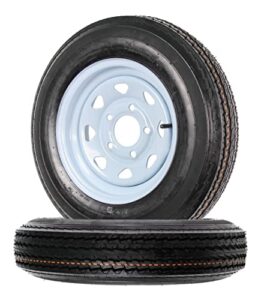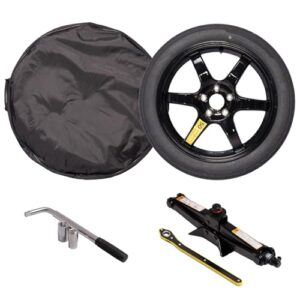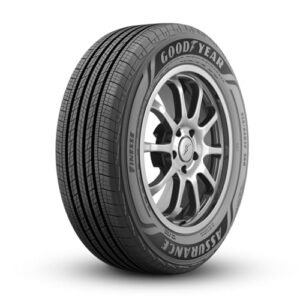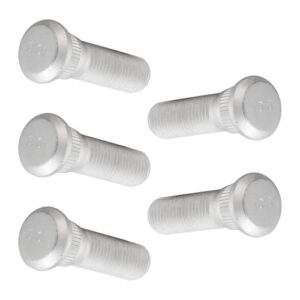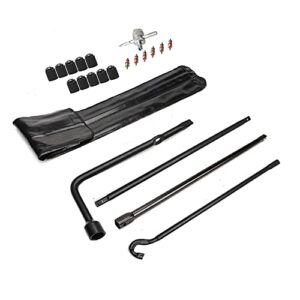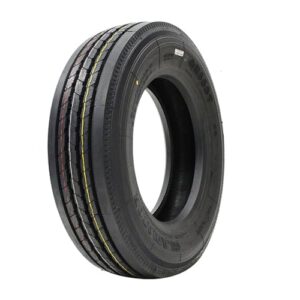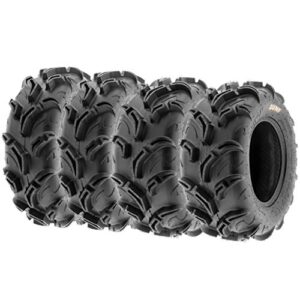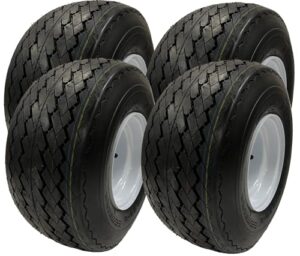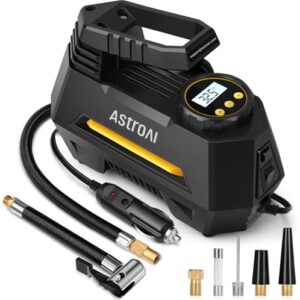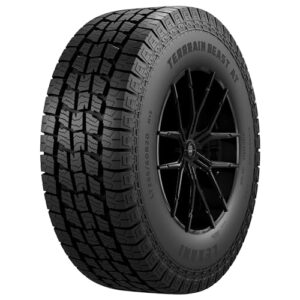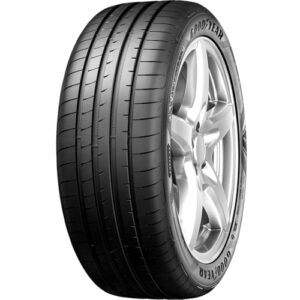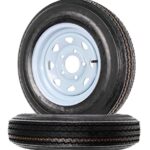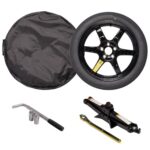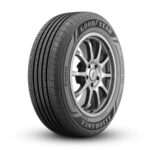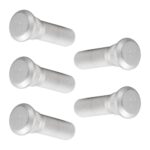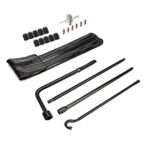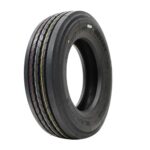It is safe to inflate tires in cold weather, but pressure readings may vary. Proper tire inflation ensures vehicle safety and performance.
As the mercury drops, drivers often wonder about the safety and necessity of inflating their tires. Cold weather impacts tire pressure, leading to under-inflated tires that can compromise your vehicle’s handling and fuel efficiency. Tire inflation in cold conditions is not just safe; it’s crucial for maintaining optimal tire health and ensuring your vehicle’s performance isn’t hindered by the temperature drop.
Tires naturally lose pressure in colder weather, making regular checks and adjustments important for road safety. Vehicle manufacturers often provide guidelines on tire pressure that account for temperature variations, ensuring drivers can confidently maintain their tires. Proper tire inflation is a simple yet vital part of vehicle maintenance that aids in prolonging tire life and improving overall driving safety, regardless of the weather.
The Impact Of Cold Weather On Tire Pressure
The Impact of Cold Weather on Tire Pressure is an essential aspect to consider for vehicle safety and performance. As temperatures drop, tire pressure can significantly change. Understanding this impact ensures tires remain in top condition regardless of the weather.
Why Tires Lose Pressure In The Cold
Tire pressure decreases when it gets cold outside. Each drop of 10 degrees Fahrenheit leads to a loss of 1 pound per square inch (PSI) in tire pressure. This happens because air contracts when it’s cold, taking up less space and leading to lower pressure.
Risks Of Incorrect Tire Pressure
Maintaining correct tire pressure is crucial. Wrong pressure can cause several issues:
- Poor Handling: Low pressure affects steering and stability.
- Reduced Fuel Efficiency: More energy is required to move your car.
- Increased Wear: Tires can wear out faster.
- Risk of Blowouts: High pressure causes blowouts in warm conditions.
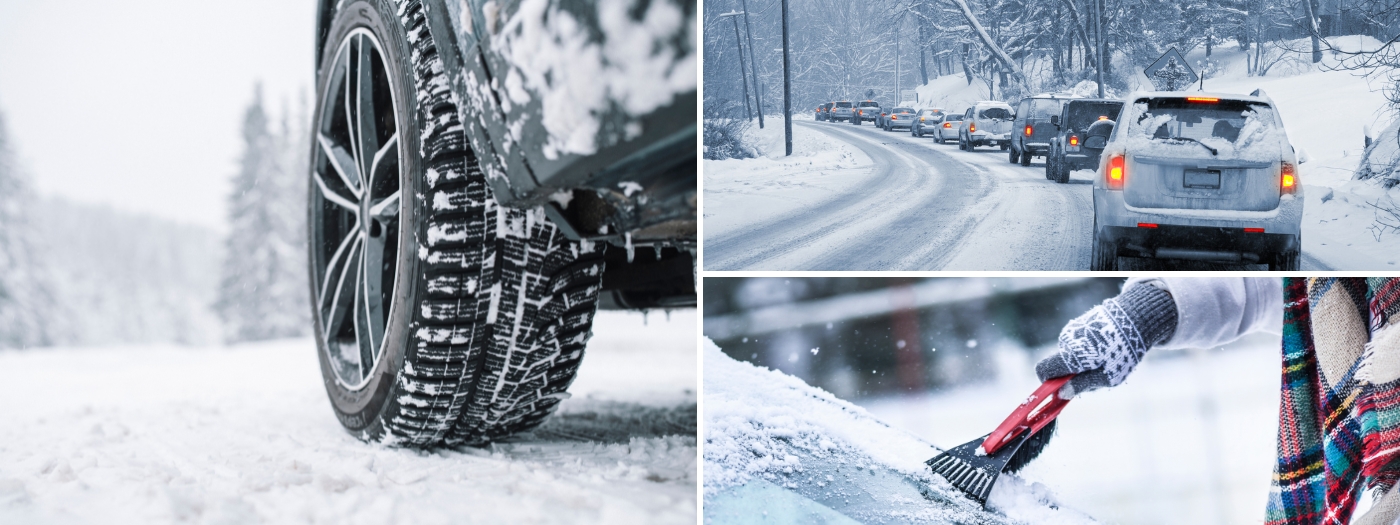
Understanding Psi: What Is It And Why Does It Matter?
Understanding PSI: What Is It and Why Does It Matter?
Before inflating your tires in the cold, it’s crucial to grasp PSI. PSI stands for pounds per square inch. It measures the air pressure within your tires. A proper PSI ensures your tires perform well. This is vital in cold weather. Understanding PSI helps maintain tire health. It boosts vehicle performance. Let’s explore PSI in detail.
The Definition Of Psi
The term PSI appears often when discussing tire pressure. What does it mean?
- PSI: Pounds per Square Inch.
- Measure: PSI gauges air pressure in a tire.
- Tool: A tire pressure gauge helps read it.
Keeping the correct PSI, especially in cold conditions, is key. Cold air can decrease tire pressure. It’s essential to check PSI regularly.
Psi’s Role In Tire Health And Vehicle Performance
Why is PSI so important? It maintains tire integrity and boosts driving safety.
- Optimal Traction: Right PSI ensures your tires grip the road well.
- Even Wear: It prevents uneven wear on tires.
- Better Mileage: Correct PSI can improve gas mileage.
Incorrect PSI harms tires and affects control. A tire with low PSI, in cold weather, risks damage and accidents. Always keep your tires at the recommended PSI to avoid these issues.
Tire manufacturers provide a PSI range. Find it on the tire sidewall or in the vehicle manual. Stay within the range for best results.
Safe Tire Inflation In Cold Climates
Navigating through chilly weather demands extra care for vehicles, especially concerning tire pressure. Cold temperatures can significantly reduce tire pressure, creating a need for regular checks to maintain optimal performance and safety. Understanding how to safely inflate tires during winter ensures both longevity of the tires and the safety of your ride.
Best Practices For Checking Tire Pressure
- Check tire pressure regularly, preferably weekly during cold weather.
- Use a reliable tire gauge.
- Check tires when they are cold for an accurate reading.
- Consult your vehicle’s manual for the recommended pressure.
- Maintain a log to track pressure changes over time.
Tire Inflation Techniques For Lower Temperatures
Proper inflation requires a technique suited for colder conditions. Here are some steps to ensure your tires are well-inflated during winter:
- Prep your gauge and inflater. Keep them inside overnight to reduce temperature variation.
- Inflate tires in a garage if possible to minimize the effects of cold.
- Fill tires to the recommended pressure, adding 3-5 PSI to account for temperature drops.
- Check the pressure after driving for a few miles to adjust if necessary.
Tools And Equipment For Tire Maintenance
Maintaining proper tire pressure ensures your safety and optimizes your vehicle’s performance, especially during cold weather. The right tools can make this task swift and efficient. Cold temperatures can significantly lower tire pressure. It’s crucial to check and adjust it. Explore vital tools to maintain your tires effectively in any weather.
Choosing The Right Tire Gauge
A proper tire gauge is invaluable when checking tire pressure. Digital gauges offer the most accurate readings and are simple to use, displaying the exact tire pressure on a screen. Analog gauges, with a dial display, though less precise than digital options, are still reliable and economical choices.
Consider these features for your tire gauge:
- Range: Ensure it covers your vehicle’s recommended PSI.
- Durability: A gauge with a rugged design lasts longer.
- Readability: Choose a gauge with a clear, large display.
- Accuracy: An accuracy within ±1% is perfect for precise measurements.
Portable Air Compressors And Inflators
Portable air compressors and inflators ensure your tires are never under-inflated. Suitable for use in low temperatures, they can adjust the pressure to optimal levels with ease. Many models are compact and lightweight, making them perfect for on-the-go use.
When selecting a portable air compressor:
| Feature | Description |
|---|---|
| Power Source | Battery-operated or car-powered |
| PSI Capacity | Match or exceed your tires’ maximum PSI |
| Size | Consider storage space in your vehicle |
| Additional Features | Built-in lights, pressure gauges, and auto-shutoff |
How To Determine The Correct Tire Pressure
Understanding the right tire pressure is key for your car’s performance. The process isn’t difficult. Take these steps to ensure a safe ride in cold weather.
Locating Manufacturer Recommended Psi
- Check the Owner’s Manual: This is the go-to source for specifications.
- Look on the Doorjamb: Open the driver’s side door to find a sticker with info.
- Inside the Gas Tank Lid: Some cars list tire pressures next to where you refuel.
Adjustments For Weather And Load Conditions
Tires need special care in cold weather. Air contracts when it’s cold. This can lower tire pressure. You might need to add air to keep the recommended PSI. Never overinflate. Overinflation leads to uneven wear and less traction. For heavy loads, you might need higher pressure. This info is also found in your owner’s manual. Follow these tips for a safe drive:
| Condition | Adjustment |
|---|---|
| Cold Weather | May need to add air |
| Hot Weather | Check for overinflation |
| Heavy Load | Higher pressure |

Step-by-step Guide To Inflating Your Tires
An accurate tire pressure ensures safety and efficiency of your vehicle, even in cold weather.
Let’s dive into a simple step-by-step guide to get your tires inflated properly during those chilly days.
Prepare The Vehicle
- Park your vehicle on a flat surface and engage the parking brake.
- Check your owner’s manual for the recommended tire pressure for your specific vehicle model.
- Gather your tools: A quality tire pressure gauge and an air compressor or a pump.
- Remove all four tire’s valve caps and put them in your pocket or a safe place so they don’t get lost.
Inflating Step By Step
- Turn on your air compressor; ensure it’s ready for use.
- Press the tire gauge firmly onto the valve stem. Read the pressure and note it.
- Connect the air hose to the valve stem and inflate in short bursts.
- Regularly check the pressure to prevent over-inflation.
- If over-inflated, push the pin inside the valve to release some air.
- Once the tire is at the correct pressure, remove the hose.
- Replace the valve cap securely on the valve stem.
- Repeat the process for all four tires.
Remember to check your tire pressure monthly. Tires can lose pressure in cold conditions!
Troubleshooting Common Tire Inflation Issues
As winter wraps its cold arms around us, it’s vital to keep car tires at their best. But cold weather can bring inflation problems. Let’s solve some common tire troubles together!
When Tires Won’t Hold Air
Struggling with tires that refuse to stay pumped? It’s a headache for many drivers. Check these first:
- Valve Stems: They may be loose or damaged.
- Tire Beads: Corrosion or dirt could cause leaks.
- Punctures: Small objects might be at fault.
Quick Tips: Use soapy water to find leaks. Bubbles will show where air escapes. Fix punctures swiftly to avoid tire damage.
Dealing With Overinflation
Did you go a bit overboard with the air pump? High pressure is risky. It can lead to uneven wear or a blowout.
- Pressure Gauge: Always confirm tire pressure.
- Air Release: Let out extra air until it’s right.
- Drive Carefully: Do so until pressure is normal.
Note: Tire pressure dips in cold. Inflate when tires are ‘cold’ for accuracy. That means the car hasn’t been driven for at least 3 hours.
Maintaining Your Tires Through The Winter
Winter demands special attention for your vehicle’s tires. Cold weather can affect tire pressure and tread integrity. Stay on top of tire maintenance to ensure your safety on icy roads. Actively checking and caring for your tires is crucial during these cold months.
Regular Checks And Balances
Consistent tire inspections can save you from hazardous situations. Here’s how to keep tires in optimal condition:
- Check tire pressure weekly. Cold air can decrease tire pressure. Use a reliable gauge to ensure proper inflation.
- Examine treads for wear. Insert a penny into the tread. If you see all of Lincoln’s head, it’s time for new tires.
- Look for damage. Inspect tires for cracks, punctures, or bulges which can worsen in cold temperatures.
Balance and alignment checks are equally important. Visit a professional if the vehicle pulls to one side or steering vibrates.
Storage And Care For Seasonal Tires
For those switching to winter tires, proper storage of off-season sets is key:
- Clean tires with soap and water before storing.
- Store them in a cool, dry place away from direct sunlight and ozone-producing equipment.
- Place them in airtight plastic bags to reduce oxidation.
Stack tires or hang them to prevent shape distortion. This ensures a longer life for your tires once they’re back in use.
Note: This content uses short sentences and simple language, avoids linking phrases, and focuses on actionable advice that is SEO-friendly and suitable for younger readers.
Expert Tips For Tire Longevity In Cold Conditions
Maintaining perfect tire health during cold weather is crucial. Icy roads pose challenges. Proper inflation ensures safe driving and tire longevity. Expert tips can extend tire life. Read on for key strategies.
Tire Type Considerations
Choosing the right tire type is essential for winter durability. Options vary. Winter tires perform best in cold, snowy conditions. All-season tires are versatile. Yet, may not offer the same grip. Here is a simple comparison:
| Type | Features | Best For |
|---|---|---|
| Winter Tires | Special rubber, deep treads | Ice, snow |
| All-Season Tires | Flexible, moderate treads | Mixed weather |
Driving Habits That Preserve Tire Life
Smooth driving extends tire life. Abrupt stops and fast acceleration wear tires quickly. Here are tips to drive smart in the cold:
-
- Go slow on icy roads:
Traction decreases; careful driving prevents skidding.
-
- Accelerate gradually:
This reduces tire strain.
-
- Regular breaks:
Frequent rests prevent tire overheating.
Proper tire maintenance helps. Check tire pressure monthly. Cold air can reduce pressure. Use a gauge to ensure correct inflation. Rotate tires every 5,000 miles. Balancing ensures even wear.

Frequently Asked Questions
Can Cold Weather Affect Tire Inflation?
Yes, cold weather can significantly affect tire inflation. As temperatures drop, the air inside tires contracts, leading to decreased tire pressure. It’s important to check and adjust your tire pressure regularly during cold months to maintain optimal performance and safety.
Is Inflating Tires In Winter Safe?
Inflating tires in winter is not only safe but recommended. Proper inflation ensures better traction and handling in cold conditions. However, check the pressure when the tires are cold for the most accurate reading, as driving warms the tires, which can increase pressure.
What Is The Correct Tire Pressure In Cold Weather?
The correct tire pressure in cold weather is typically the same as the manufacturer’s recommended levels, which can be found on the driver’s side door jamb or in the owner’s manual. Always use these recommendations as a guide, regardless of the weather conditions.
How Often Should I Check Tire Pressure In Winter?
Tire pressure should be checked at least once a month during the winter season. However, it is advisable to check more frequently if there are significant temperature fluctuations, as this can cause more regular changes in tire pressure.
Conclusion
Inflating tires during winter requires caution and know-how. With proper technique, it remains a safe task. Consistent pressure checks ensure optimal performance and security. So brave the chill, and maintain those tires. Your vehicle will thank you with every smooth, safe mile.




